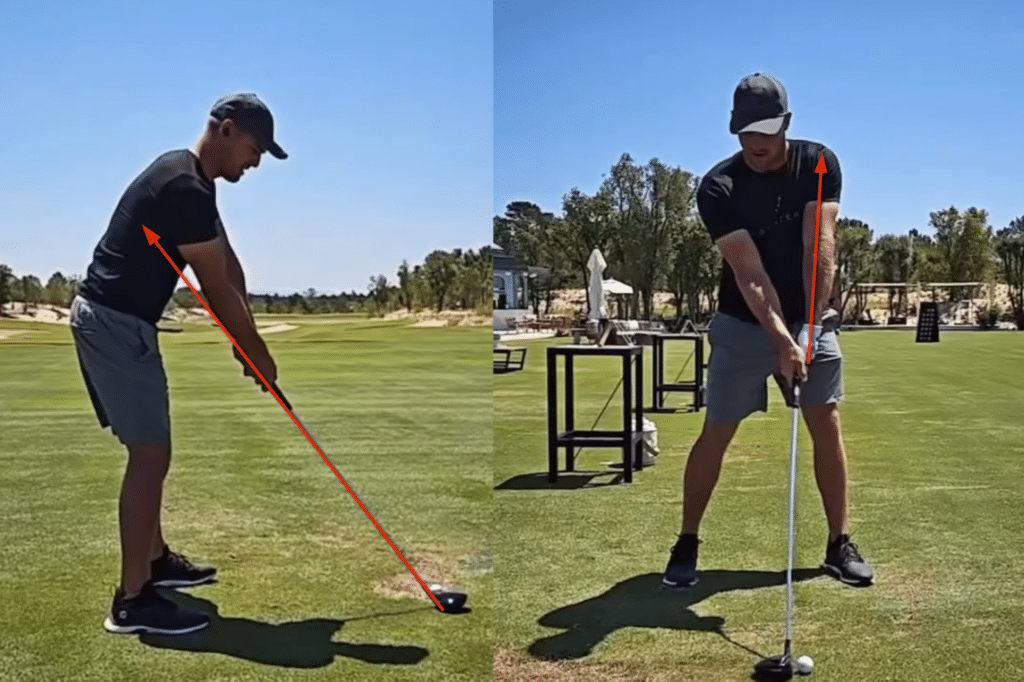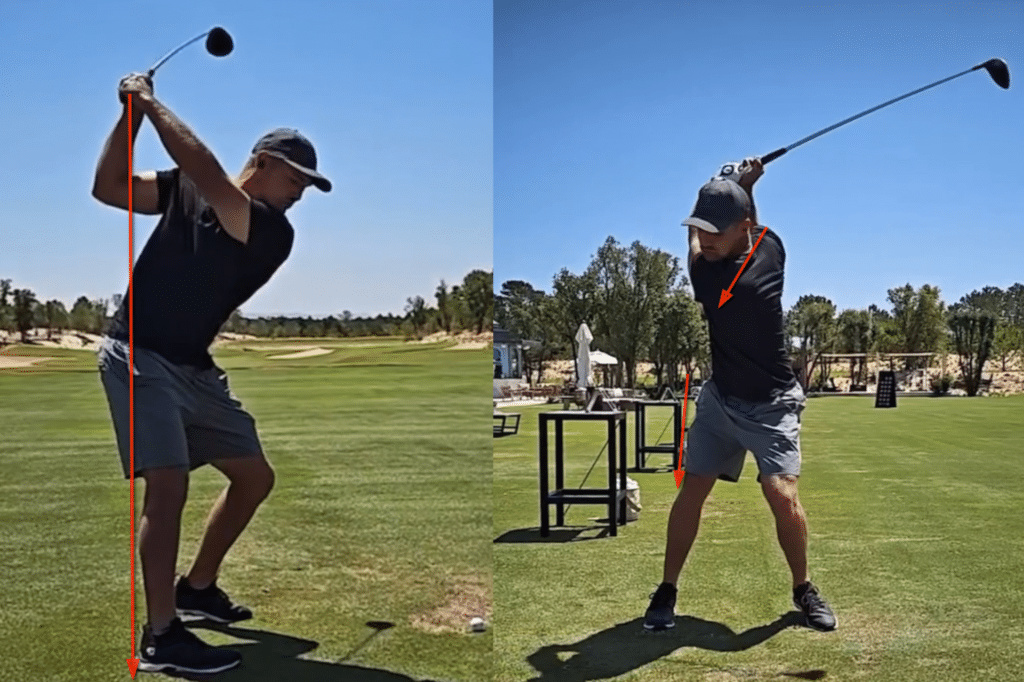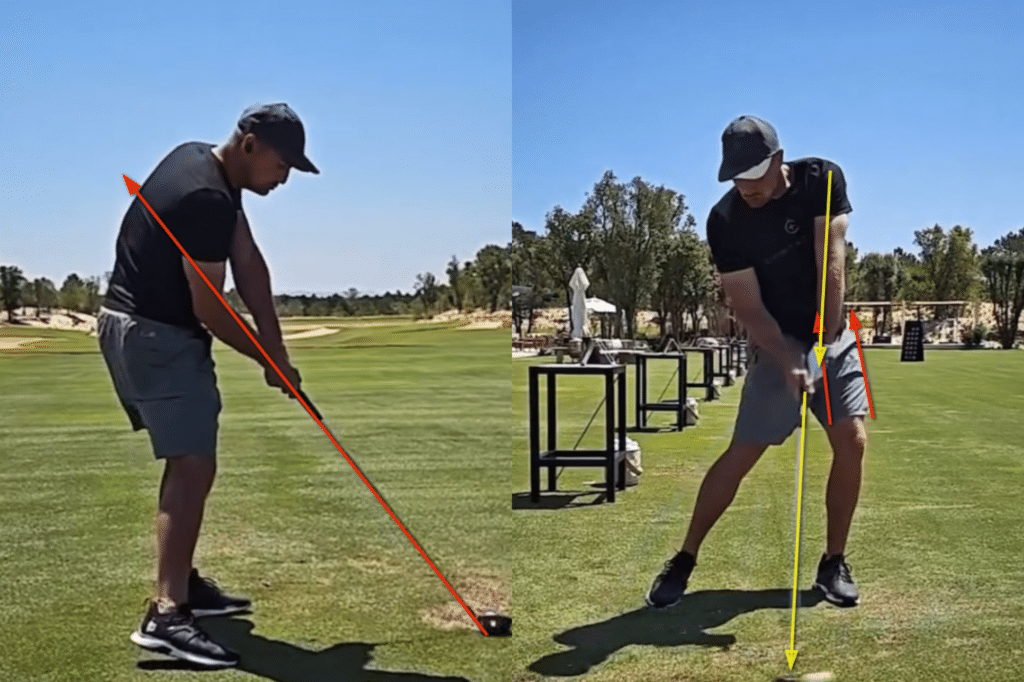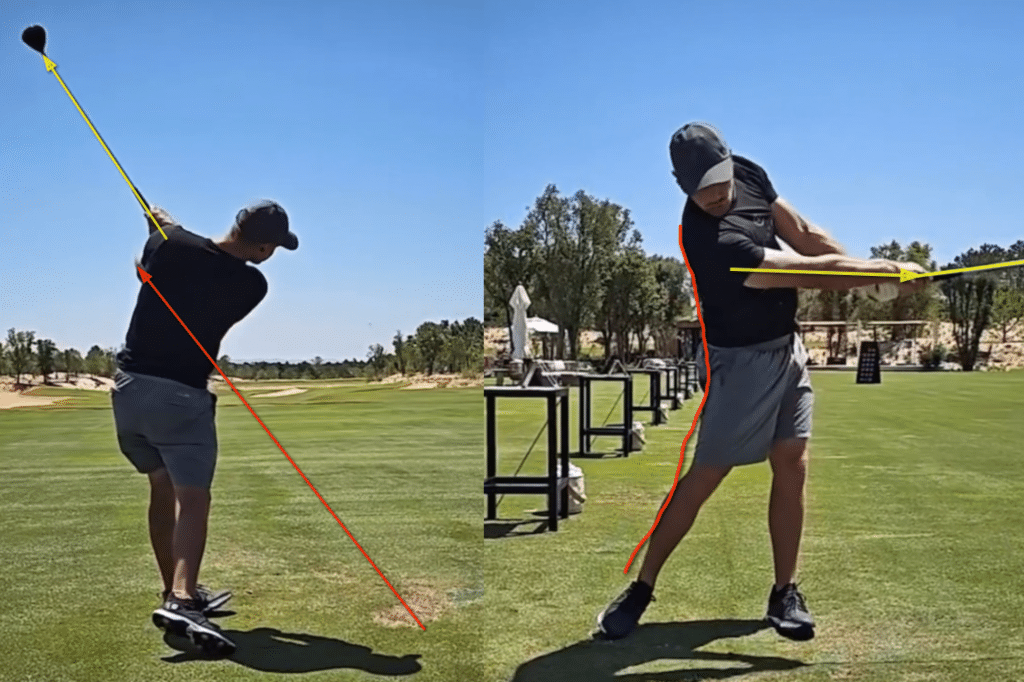Bryson DeChambeau is an iconic figure in today’s golf landscape. Known for his scientific approach to the game, the LIV Golf money machine has already undergone 2 serious swing changes in his career and is having more and more good performances. Despite his unusual grip and set-up, his swing is surprisingly ‘normal’. Let PGA Professional Jack Backhouse show you why in this Bryson DeChambeau golf swing analysis.
- RELATED: Bryson DeChambeau Player Profile
- RELATED: Bryson DeChambeau What’s In The Bag
- RELATED: Bryson DeChambeau Schedule and Results
Bryson DeChambeau Golf Swing Analysis: Set-Up
Bryson’s address position is like no other in professional golf. Growing up following the legendary Golfing Machine instruction book, DeChambeau followed a single-plane theory, where you swing your hands and club on the same plane as the lie angle of the golf club.
This means he addresses the ball with much higher hands than the regular golfer, with his left wrist having more ulnar deviation. His posture is tall and relaxed through his back, with his legs only slightly bent. This is a very ‘old school’ posture, but one that allows you to turn easily. It is also worth noting how weak the grip of his left hand is. With a flat left wrist being one of the principles of The Golfing Machine’s theory, Bryson sets his wrist flat at the start and endeavours to keep it that way throughout the swing.

Backswing
At the top of the swing, Bryson’s swing looks most ‘normal’, with loads of points to copy. He has a massive hip turn, which creates a huge gap between his knees, and actually lifts his left heel off the ground (this is the only acceptable time to lift the left heel off the ground). Staying with his hip turn, he actually moves his hips forward towards the front as he turns and gets into a position at the top where his weight is more on his front foot than his back foot.
This isn’t as taboo or individual as you might think; it is actually very common for tour players to shift to their front foot early. This helps guarantee a downward attack angle and a good strike, and most amateur golfers would hit the ball better if they did this.
DeChambeau has a massive shoulder turn in which his head also turns back (great advice for those with a stiff neck) and gets his hands behind his right heel at the top of the swing. This is an extremely powerful position to arrive at at the top and contributes to his big draw pattern.

Downswing
In a period of golf instruction when coaches want golfers to open their bodies more for more speed and better clubface control, Bryson does not buy into that. His downswing features a monster 6-inch plus hip slide to the left, and his forearms are actually significantly closed at impact, just like Ben Hogan’s. Yes, he has turned his body, but Bryson creates his speed with his lateral shift and massive arm pull down from the top.
At impact, you can see how his club and arm align nicely with his original plane line (one plane), and he delivers the club with a perfect flat left wrist and does this with all clubs, from wedges to driver swings. This is how Bryson controls the direction of his golf ball, with a feeling that the ball will start in the direction that his left wrist points at impact, which is quite a cool thought.

Into the Finish
Bryson’s follow-through is flawless. The club swings up on the same plane he took it back and swung down on, he has maintained a flat left wrist throughout so is able to control his loft and clubface appropriately, and posts his left leg and extends his hips, back and arms into a wonderful long right arm position. This massive extension is a sign that he’s left nothing back when hitting the ball, a perfectly efficient strike into the finish.

Bryson DeChambeau Swing Analysis: What can we learn?
Bryson is a great copy for mid-handicappers and amateur players, as he has built a swing around hitting a draw and striking the ball first every time, not aesthetics. If more golfers employed this tactic when trying to improve their game, then we would see far fewer golfers with handicaps above 10! Here are a few key takeaways that I think would benefit nearly all golfers if they wanted to go away and learn from Bryson.
- Hips forward in the backswing. Don’t wait until the downswing to shift your weight; there isn’t enough time. Shift forwards early in the backswing, and you won’t believe how well you strike the ball.
- Huge turns. We all need more hip and shoulder turns and maybe even more head turns in the backswing. This produces more clubhead speed and more draws—who doesn’t want that?
- Flat left wrist. This one sometimes goes missing in Bryson’s quirky way of holding the club, but it is a massive key to accuracy. Keeping loft and face angle under control at all times will make you a better iron and wedge player, which are crucial parts of the game for mid-handicappers.
He might have had 3 different swing coaches in his career so far, but thankfully Bryson has never strayed too far from his DNA as a single planer and will always have a recognisable golf swing. He has dialled it back from that crazy weight gain, 10 protein shakes a day and club head speed he achieved in 2020, and If he keeps working on his scoring skills I’m sure there is more major success in his future.
If you enjoyed this Bryson DeChambeau golf swing analysis, keep an eye out for more tour winners’ swing analysis in the future.
- RELATED – How To Draw The Golf Ball
- RELATED – Master The Most Important Part Of The Swing
- RELATED – Scottie Scheffler Swing Analysis
The post What Makes It Work? Bryson DeChambeau Golf Swing Analysis appeared first on National Club Golfer.